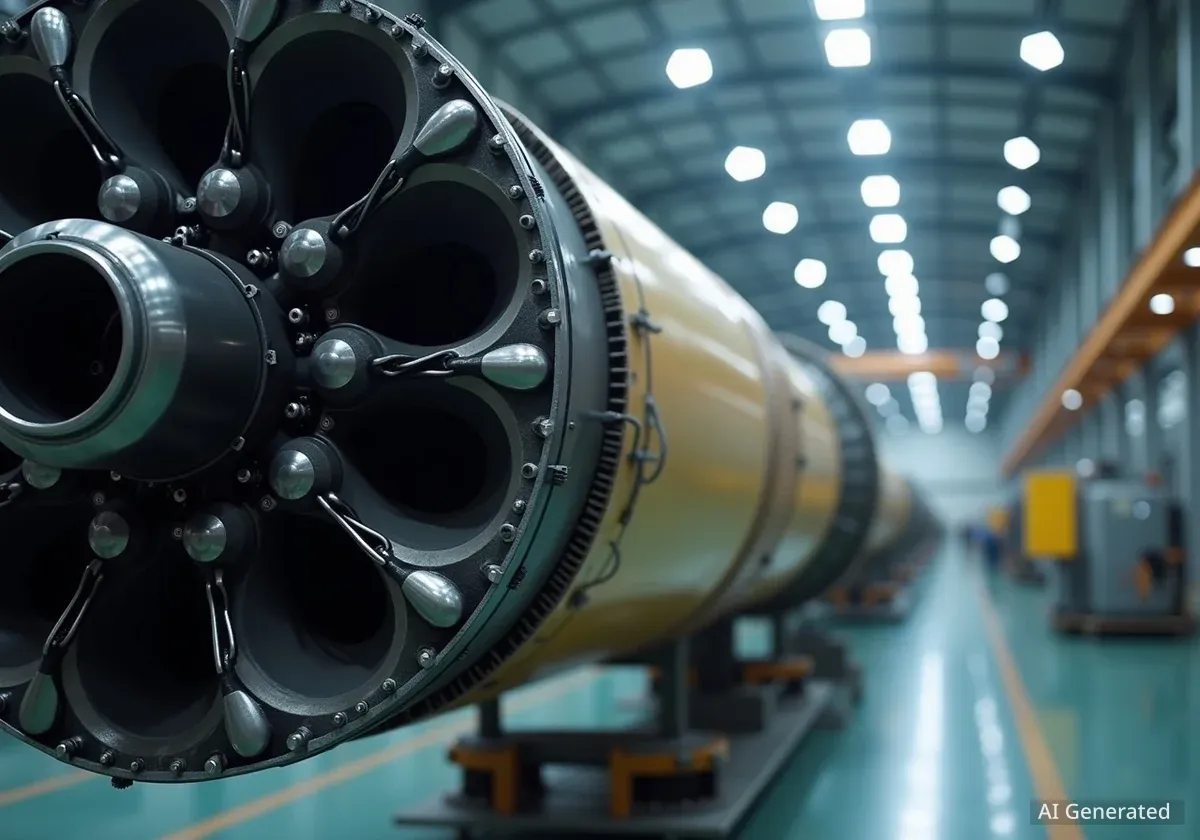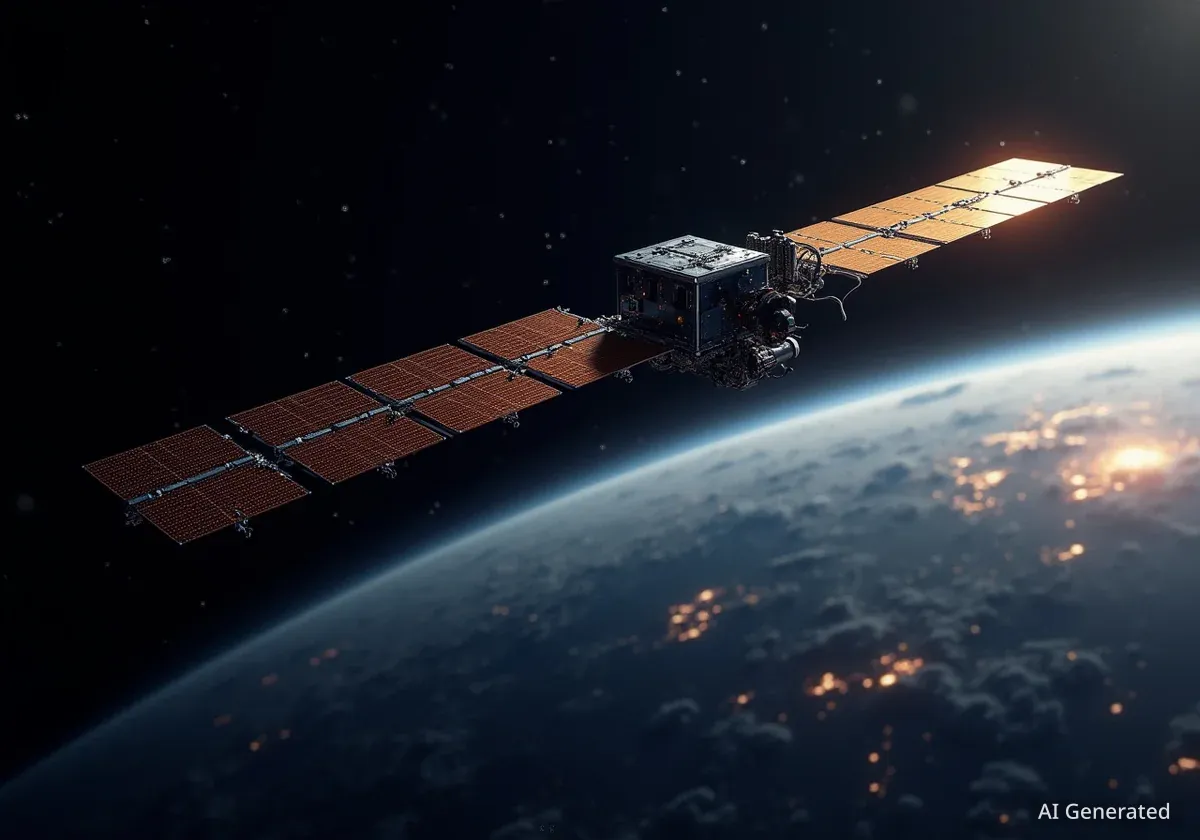Rocket engine manufacturer Ursa Major has received a $34.9 million contract from a major U.S. aerospace and defense contractor to advance its Draper engine. This funding is designated to accelerate the production and testing of the engine, which is designed for critical space defense and hypersonic applications.
The agreement aims to move the Draper engine closer to deployment for national security missions. It focuses on preparing the engine for operational conditions, a crucial step in validating its readiness for use by the U.S. government and its allies.
Key Takeaways
- Ursa Major was awarded a $34.9 million contract to speed up the development of its Draper rocket engine.
- The Draper engine is a storable liquid rocket engine intended for hypersonic weapons and in-space maneuvers.
- Advanced manufacturing, including 3D printing for nearly two-thirds of its parts, is used to reduce costs and production time.
- This contract follows a separate $28.6 million award from the U.S. Air Force Research Laboratory for a hypersonic flight demonstrator.
Details of the New Funding Agreement
The $34.9 million in new funding represents a significant investment in Ursa Major's propulsion technology. The capital will be used to scale up manufacturing capabilities and conduct rigorous testing that simulates real-world operational environments. This process is essential to ensure the engine meets the strict performance and reliability standards required for national security missions.
By accelerating both development and production, the contract helps address a growing demand for advanced propulsion systems. The goal is to create a reliable supply of high-performance engines that can be produced quickly and affordably, strengthening the U.S. defense industrial base.
The Need for Responsive Propulsion
Modern defense strategies increasingly rely on the ability to respond to threats quickly. This includes deploying satellites, maneuvering assets in orbit, and developing hypersonic weapons. Traditional rocket systems can be slow to prepare and launch. The Draper engine is designed to overcome these limitations by offering a propulsion system that is both powerful and responsive.
Technical Capabilities of the Draper Engine
The Draper is a storable liquid rocket engine, a design that offers several advantages over conventional solid rocket motors. Its key feature is its flexibility during flight. Unlike solid motors, which burn until their fuel is exhausted, Draper can be throttled, restarted, and have its thrust adjusted mid-mission.
Advanced Control and Flexibility
This level of control is critical for a range of modern defense applications. For example, in-space maneuvers require precise bursts of thrust to change a satellite's orbit or orientation. Hypersonic vehicles also need adjustable propulsion to manage their trajectory and speed while traveling through the atmosphere.
The engine's capabilities include:
- Throttling: The ability to increase or decrease thrust during operation.
- Multiple Restarts: The engine can be shut down and reignited multiple times in space.
- Long-Duration Storage: Draper uses non-toxic, non-cryogenic propellants that can be stored for at least ten years without degrading performance.
3D Printing in Rocket Manufacturing
Ursa Major utilizes additive manufacturing, or 3D printing, for nearly two-thirds of the Draper engine's components. This approach significantly simplifies the design, reduces the number of individual parts, and lowers production costs. It also allows for rapid prototyping and faster manufacturing timelines compared to traditional methods.
Strategic Importance for National Defense
The development of the Draper engine comes at a time when the United States is focused on enhancing its capabilities in space and hypersonic defense. Officials have highlighted the need for more agile and cost-effective systems to counter emerging threats from global adversaries.
Dan Jablonsky, CEO of Ursa Major, emphasized the engine's role in this new defense landscape.
“As adversaries increase their activity in space and missile defense becomes more multidomain, Draper provides the responsiveness, control, and flexibility required for the U.S. to defend against emerging threats,” Jablonsky stated. “As a high-speed, affordable mass propulsion system, Draper represents a paradigm shift in defense propulsion on land, at sea, in the air, and now, in space.”
Jablonsky's comments underscore the engine's intended use across multiple domains. Its design as an affordable mass propulsion system suggests a strategy to produce engines at a scale and cost that allows for widespread deployment across various military branches and platforms.
Building on Previous Success and Future Testing
This latest contract is not Ursa Major's only major government-backed project for the Draper engine. It complements a previous award from the U.S. Air Force Research Laboratory (AFRL) valued at $28.6 million.
The AFRL Hypersonic Demonstrator
Under the AFRL contract, Ursa Major is tasked with building a flight demonstrator to prove the Draper engine's capabilities for hypersonic flight. This test is a critical milestone that will provide real-world data on the engine's performance at speeds exceeding Mach 5. According to the company, this demonstration flight is expected to occur before the end of 2025.
The combination of the new $34.9 million contract and the ongoing AFRL project provides a comprehensive pathway for the Draper engine. While the AFRL project focuses on proving its hypersonic application, the new funding will ensure the engine can be manufactured reliably and at scale for a variety of missions, including those in space.
Proven Reliability
To date, the Draper engine has undergone extensive ground testing. It has been successfully hot-fired more than 250 times, demonstrating its durability and design maturity. This rigorous testing is a prerequisite for its use in high-stakes defense missions.
With these two significant contracts, Ursa Major is positioning the Draper as a foundational propulsion system for the next generation of U.S. defense technology. The engine's unique combination of performance, flexibility, and affordability addresses a clear need for more advanced and responsive capabilities in an increasingly contested global environment.





